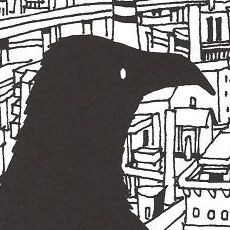I’m not an admirer of the moé aesthetic, so my initial response to Sora no Woto was one of indifference; just more moé, I thought; not interested. That’s always my default reaction to a series like this, but the thing is, life’s not that simple.
Genre is a superficial excuse; no single story is the same as another, and despite my misgivings, Sora no Woto was beginning to look more and more interesting with each passing week. Well, inevitably, last night I caved and watched its first three episodes.
In the second, the young Kanata and Kureha venture into a derelict high-school. Wandering through its empty halls, they find old papers strewn across the floor, the walls torn apart, desks thrown any which way, carefree students pictured in mouldy old photographs, dressed in typical uniform; evidence suggesting a society not unlike our own, a society long since lost.
The girls are protected by what feels like the last remaining sanctuary of their country; the only place where youth and naivety are still able to exist, and that feeling of moé, of innocence, is woven beautifully into a world on the brink. In a way, it’s like Haibane Renmei, where quiet, hazy days are fritted away on mundane tasks, yet the undercurrent of sadness is palpable.
The direction is conflicted, like someone simultaneously celebrating youth yet lamenting its transience and fragility; nostalgia, perhaps? It’s as if the faintest of touches could shatter these girls’ into a million tiny pieces, and that sense of vulnerability is foreboding and melancholy.
Where Sora no Woto goes from here will be interesting. There is potential for tragedy and heart break, but perhaps it’s just content with being what it is right now? A bitter-sweet lament.

Leave a Reply